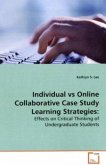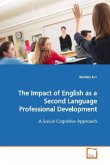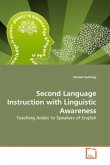The study described in this text was undertaken to
test the hypothesis that reading comprehension items,
which elicit specific bottom-up and top-down
strategies, favour certain linguistic/cultural
groups. Although a variety of statistical methods
have been developed for flagging test items that
function differentially for equal ability examinees
from different ethnic, linguistic, or gender groups,
the standard differential item functioning (DIF)
detection procedures have not been very useful in
explaining why DIF occurs. To address this problem, a
confirmatory approach to DIF was used to determine
whether groups of reading test items, classified
according to a bottom-up, top-down reading strategy
framework, functioned differentially for equal
ability Arabic and Mandarin ESL learners. Analyses
revealed systematic group differences in two of the
bottom-up and three of the top-down reading strategy
categories. These results demonstrate the utility of
employing a theoretical framework for interpreting
group differences on a reading test that can be used
to assist ESL reading researchers, test developers,
and instructors in the development of technically
sound reading assessments.
test the hypothesis that reading comprehension items,
which elicit specific bottom-up and top-down
strategies, favour certain linguistic/cultural
groups. Although a variety of statistical methods
have been developed for flagging test items that
function differentially for equal ability examinees
from different ethnic, linguistic, or gender groups,
the standard differential item functioning (DIF)
detection procedures have not been very useful in
explaining why DIF occurs. To address this problem, a
confirmatory approach to DIF was used to determine
whether groups of reading test items, classified
according to a bottom-up, top-down reading strategy
framework, functioned differentially for equal
ability Arabic and Mandarin ESL learners. Analyses
revealed systematic group differences in two of the
bottom-up and three of the top-down reading strategy
categories. These results demonstrate the utility of
employing a theoretical framework for interpreting
group differences on a reading test that can be used
to assist ESL reading researchers, test developers,
and instructors in the development of technically
sound reading assessments.








